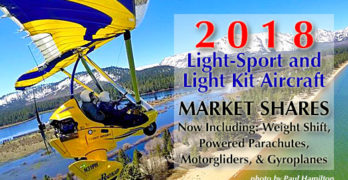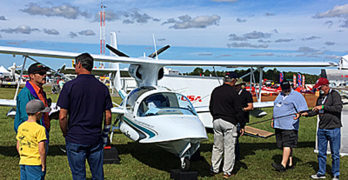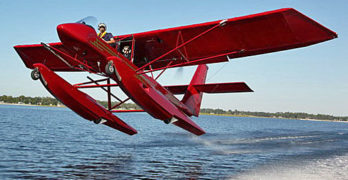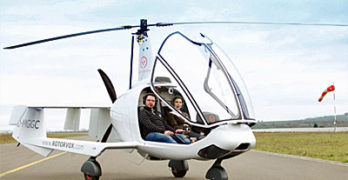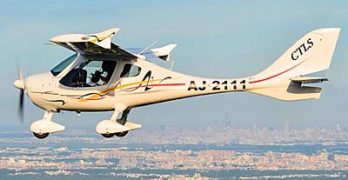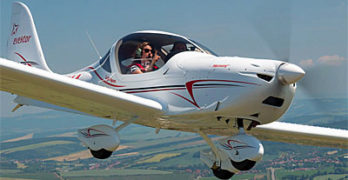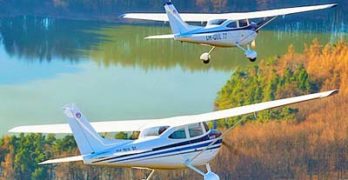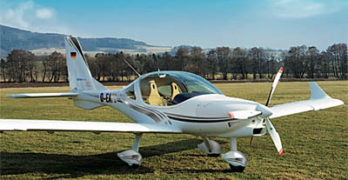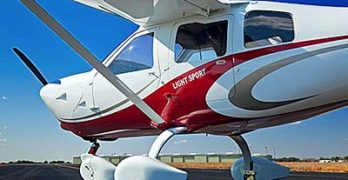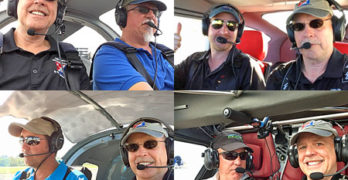If you like Light-Sport Aircraft and if you like statistics, you are going to love this article.* Our wholly refreshed look at aircraft registrations marks the return of our popular market share rankings and now includes much more information. We also provide more aircraft classes in various tables and charts and much of this is user-configurable.
Yet, as late night TV advertisers might exclaim, “That’s not all. It gets even better!”
You have always been able to consume all our market share info that includes articles about the industry and enterprise of light aviation conveniently grouped on its own page. With the relaunch of this popular and vital component of ByDanJohnson.com, you gain new ways of looking at the information. Let’s call it LSA Market Info 2.0
Introducing Tableau!
Using a new service that our associate Steve Beste engaged, check out the “Dashboard” look at the LSA industry at Tableau Public.
Search Results for : Flight Design
Not finding exactly what you expected? Try our advanced search option.
Select a manufacturer to go straight to all our content about that manufacturer.
Select an aircraft model to go straight to all our content about that model.
DeLand Showcase 2018 …a Wrap after a Strong Third Day with Plenty of Flying
DeLand Showcase 2018 is over, which signals the airshow season is over for this calendar year. At the end, many concluded the show was good for customers and vendors.
Pilots placed orders for new aircraft and left with smiles on their faces; I spoke to a few of them. Many of you also said hello during the event; that’s always fun.
Despite my positive words, some feel these “regional shows” aren’t as meaningful as the large shows. Is that right or not? It depends on the observer to some extent.
I venture to say that if you could evaluate orders placed with cash and create a ratio of those people compared to the number of persons coming in the gate, DeLand (or the other LSA- and light kit- specific shows) would smoke all others. No question the big shows with their thick crowds satisfy the soul of attendees and vendors alike.
Clamar Floats Moving to Brunswick, Maine; Joining Other Light-Sport Aircraft Companies
While weather starts to cool in the northern USA, in the sub-tropical south, it is still warm enough to enjoy float flying. However, even up north — Maine, in this case — seaplane activity continues to pace the LSA market.
Recently, seaplane enthusiast and businessman Paul Richards informed us of a move for a leading producer of floats for light aviation: Clamar.
Paul wrote, “Clamar Floats designs and produces straight and amphibious floats for experimental aircraft using high-tech materials and vacuum infusion technology to produce the lightest and strongest floats available.” Until this announcement, the company has been located in London, Ontario Canada.
However, Paul reported that Clair Sceli, founder of Clamar Floats, announced the upcoming relocation of Clamar’s manufacturing operations to Brunswick Executive Airport on the campus of Brunswick Landing in Midcoast, Maine. He said, “This is a 3,500-acre campus is the former Brunswick Naval Air Station now operated by the Midcoast Regional Redevelopment Authority.”
The onetime military facility includes an 8,000 foot runway while the seaplane-accessible Androscoggin River water is less than two miles from the departure end of runway 01.
Rotorvox C2A Gyroplane Lands in USA; Will Debut at Sun ‘n Fun 2018
Besides LSA seaplanes, one area of furious development (and sales) is gyroplanes, the term modern industry prefers to “gyrocopter,” which was actually a branded name used since the days of Igor Benson.
A new player, arriving on the scene about five years ago, is Rotorvox. Americans have not seen this aircraft but will soon get an opportunity at Sun ‘n Fun 2018 at Booth #30 in Paradise City.
Demonstration flights will occur throughout the week.
What Sets Apart Rotorvox?
Structurally, the C2A is largely carbon-fiber monocoque construction. This is notably different than the majority of smooth-looking gyroplanes. Most are steel structure with a composite pod. Rotorvox’s fuselage is also engineered to provide a protective cell for the occupants.
A few other side-by-side seating gyroplanes are on the market, including Cavalon from AutoGyro, the far and away market leader. Rotorvox’s version employs the carbon structure to provide such seating, which means it can double as a very inexpensive air ambulance.
CTLS Flying High in Asia-Pacific as AeroJones Gains Full Approval
For most years of Light-Sport Aircraft one aircraft model convincingly lead the parade. That aircraft is broadly identified as the CT-series: CT2K, CTSW, CTLS, and CTLSi. Until CubCrafters caught up and passed Flight Design while the company took a breather to reorganize, the CT-series was the best selling Light-Sport Aircraft in America.
The aircraft also sold well in many other countries, concentrated in European nations; close to 2,000 are flying. One part of the world needed a different approach: Asia-Pacific, including countries such as China, Australia, New Zealand and others. For this region, CT representation needed a fresh face attuned to the local culture.
In a deal started a few years ago, a Taiwan-owned / China-based company named AeroJones Aviation Technology Co., Ltd., negotiated a manufacturing license agreement with Flight Design, the German company that created the CT-series. Money changed hands, training started, and eventually AeroJones fired up their production engine.
Evektor Approvals in Europe (EASA) and China (CAAC)
Forever, Evektor will remain the very first Special Light-Sport Aircraft approved by the FAA, beating Flight Design’s CT series by a small margin. Both were the first SLSA ever accepted* by FAA and that will never change. Just like in the Olympics, it’s good to come in first. People remember.
More recently, Evektor continued their prowess at gaining the seal of approval from regulatory authorities, and in two other regions besides the USA. If you’ve ever inspected a SportStar or Harmony, you might quickly see why the Czech company keeps passing the test; they produce some beautiful aircraft.
EASA Approval
The European Aviation Safety Agency (EASA) recently certified* Evektor’s SportStar RTC — which the company calls its “training aircraft” — with the popular Garmin G3X Touch Glass Cockpit, reported Evektor. G3X Touch is a digital integrated avionics system built with a native infrared touchscreen interface.
Video Pilot Report; Examining Aeropilot USA’s L600 Light-Sport Aircraft
This website was born in 2004 after a few years of laboriously uploading a large number of written pilot reports that had appeared in aviation print magazines over the years before. It was tougher to do then than it is now.
The project started in late 1999, barely four years after the World Wide Web was built on the Internet. Tools were crude then and it proved to be a multi-year project to convert from print to web. Today, such a task is vastly easier and we hope you are enjoying the refreshed ByDanJohnson.com that was launched in spring 2017.
In this new millennium of intense change, print has slowly but steadily yielded to online (aviation magazines have actually faired reasonably well, but print in forms such as newspapers has badly eroded). We got lucky as we were early and we established a solid presence for this website that today reaches most of the owners of the 66,000+ LSA or LSA-like aircraft sold around the world, with the majority of those aircraft delivered since 2000.
Vessel’s KLA-100 Wins Approval from South Korean Aviation Authorities
In December 2017, South Korea’s Vessel Co. won what was described as “safety certification” from the Transport Ministry for their new two-seat light aircraft called KLA-100. After gaining this approval, the company reported plans to start mass producing the light recreational aircraft.
Vessel’s side-by-side aircraft claims a maximum cruise speed of 245 kilometers per hour (133 knots; 10% faster than allowed by FAA in the U.S.) and a range of 1,400 kilometers (875 miles) over six hours with full fuel of 34 gallons.
KLA-100 is a modern design featuring majority carbon construction. As CTLS developer Flight Design was hired to help design the new aircraft, some readers may see similarities to the high wing model the Germany company produces.
Working with Flight Design, Vessel spent four years to develop the light aircraft. Pilots have carried out test flights over the last seven months and at the end of the year just concluded, their prototype was cleared for production.
US Sport Planes Takes Over North American Sales of Jabiru Light-Sport Aircraft
For many years the brand name Jabiru — both airframes and engines — has been associated with Pete Krotje and his family and other team members, doing business as Jabiru North America. Pete began in the business near Oshkosh, Wisconsin before seeing the appeal of milder weather in Shelbyville, Tennessee.
Now, the familiar brand from down-under Australia is headed further south in the USA. The brand with the funny-sounding name will end up being represented by another light aircraft industry veteran, Scott Severen.
The official news release on this change declared, “In a move initiated by Jabiru North America, LLC, US Sport Planes of Denton, Texas has been appointed as the North American importer and distributor for Jabiru Light Sport Airplanes for North America.” The two businessmen reported US Sport Planes (USSP) will be the exclusive importer and market the full line of LSA airplanes manufactured by Jabiru Aircraft Pty, Ltd.
Flying for You … Video Pilot Reports
Sometimes I am told I have the best job in the world. Hmm, could be.
My work entails some of those things no one truly loves, like paying bills, but it also involves flying airplanes for review. That part is indeed quite a pleasure.
In this post, I want to tell you what I flew at the DeLand Showcase 2017 plus a little about how we do these VPRs or Video Pilot Reports.
For many years, I wrote such things for print. That still happens but most of my reporting now goes online and my more detailed pilot reports have significantly — though not exclusively — gone to video …hence “VPR.”
At DeLand 2017, I went aloft six times, five to evaluate aircraft and once on a photo (and video) mission.
Video reporting consumes much more time than an interview, 30 minutes or more simply to attach some or all of our eight Garmin VIRB cameras inside and outside the subject aircraft.
- « Previous Page
- 1
- …
- 15
- 16
- 17
- 18
- 19
- …
- 147
- Next Page »


